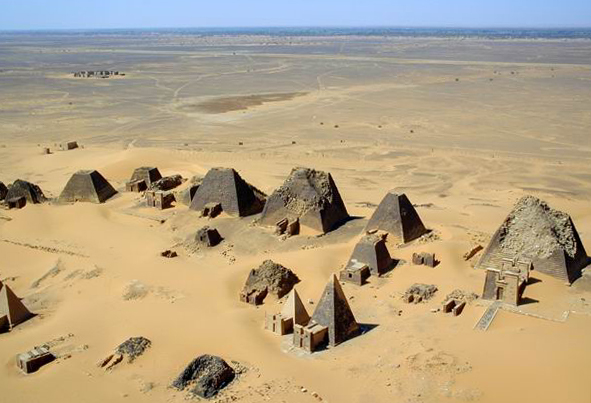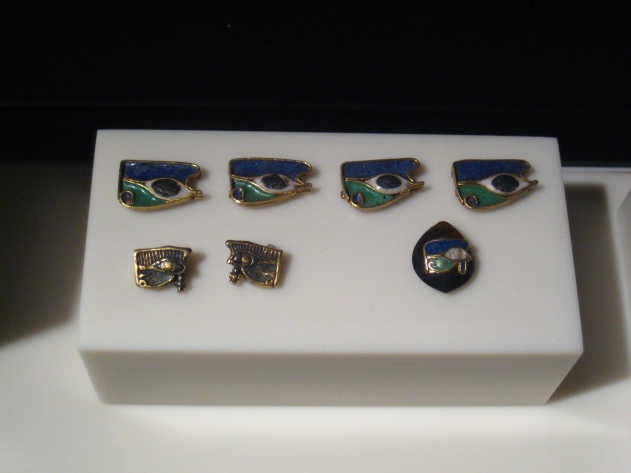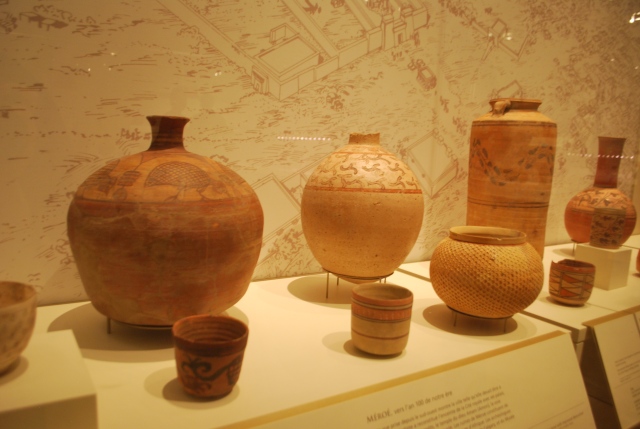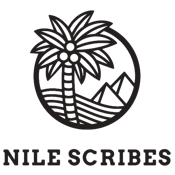This past Wednesday, Annissa Malvoisin presented Meroë: Capital of Kush at a lecture event hosted by the Toronto Chapter of the SSEA. Annissa is a 2nd year PhD student at the University of Toronto in the department of Near and Middle Eastern Civilizations. She is interested in Egyptian-Nubian relations as well as ceramic typologies and plans on writing her dissertation on Meroitic ceramic cultures. The lecture covered the excavation history at Meroë, major structures at the site with special emphasis on the temples, some notable finds and their cultural markers, and the ceramic styles of Meroitic artisans.

A look into the capital
Meroë, a site in modern-day Sudan, was the capital of the Meroitic Kingdom (300 BC – 400 AD) after a transfer from the capital of Napata of the earlier Napatan phase (760 – 300 BC). Meroë was at the crossroads of major cultural trade routes: in the North, a route would reach Egypt and the Mediterranean, and to the South contact took place with Sub-Saharan Africa. Although “the island of Meroë” was known since the writings of ancient Greek historians like Herodotus and Diodorus Siculus, the early modern interest in the site during the 19th Century could more easily be described as “treasure hunting” rather than “excavating.” Giuseppe Ferlini, the notorious discoverer of the jewellery of Queen Amanishakheto, now split between museums in Berlin and Munich, tore down numerous pyramids at Meroë in his quest for treasure. Among such treasures were items for adornment, which were an important means of cultural expression during both the Napatan and Meroitic phases of Kushite history. For example, the stunning jewellery found in Amanishakheto’s burial (see the photo below) are also replicated being worn by kings and queens in reliefs on temple walls at Meroë.

Egyptian Pyramids in Meroitic tradition
The speaker highlighted the uniquely Kushite practice of royal successors commemorating their predecessors by constructing the pyramidal superstructure on top of their predecessor’s burial chamber which was constructed during the king’s lifetime. The Kushite construction method also differed from that used in Egypt: pyramids at Meroë were built with an earth and rubble core and cased in sandstone blocks (a soft sedimentary rock) which made them susceptible to erosion, collapse, and later exploration. While the Egyptian iconography of a pyramid was adopted at Meroë, it clearly followed local traditions and inspirations. Annissa also enthralled attendees with a discussion of an enigmatic jumble of mutilated bones, which were found during Peter L. Shinnie’s work at the site in the 1980s. Dating to the post-Meroitic period, this is clearly evidence for some violent activities, though their exact nature or significance has not been identified yet.

Elaborate Decoration on Meroë’s Pottery
Annissa ended her talk with an excited look at Meroitic ceramic production – after all, Nubian ceramics are her forte. Meroë was known for its delicate, wheel-made “eggshell ware” and vessels with combinations of painted and stamped patterns. She elaborated on the way that three artistic traditions came together at the site: artists incorporated Egyptian, Hellenic, and local traditions into the decor and shape of their vessels. She drew our attention to a globular jar in the Royal Ontario Museum’s collection with rows of small, triangular impressions covering the surface. The question arose, whether this may have been made with a single stamping tool for each impression or a larger stamp that would have been rolled across the surface of the vessel.
Annissa’s talk illustrated many of the unique developments at Meroë worthy of discussion- from the elaborate jewellery to the skill of its potters. One thing is certain: Meroë deserves much more attention than it has received, both in its study and its preservation.
Photos:
- The famous pyramids of the Northern Cemetery at Meroë – [photo: B.N. Chagny]
- Bracelet charms found in the tomb of Queen Amanishakheto (pyramid N6) from the 1st century BC- now on display in the Neues Museum, Berlin, Germany – [authors’ photo]
- Example of Meroitic pottery on display in the Royal Ontario Museum, Toronto, Canada – [authors’ photo]

